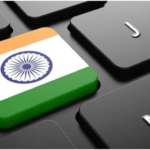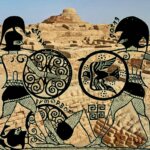On September 7, 1695, English pirates supported by the government attacked the Ganj-i-Sawai, a huge Indian commercial vessel transporting 900 passengers and crew from Yemen to Surat. After killing a significant number of men and raping the women for many days, the pirates fled with gold, silver, and precious stones believed to be worth between £200,000 and £600,000 ($400 million in present-day terms). In 1688, the average yearly wage in England was around £32.

British Loot of India
That was the riches generated by a single ship in one day. During the nearly thirteen thousand days that the British ruled India, ships travelled every day from India’s coastal ports to Britain. They were packed with unimaginable amounts of gold and other goods, such as icons, sculptures, scrolls, and manuscripts, that had been stolen from the coffers of Indian rulers, businesspeople, temples, landowners, schools, universities, charity organizations, and ordinary people.
Some Facts on the British Loot Of India
The extent to which the British looted Jhansi in 1858 may be gleaned from the British destruction of the city. On the first day, the British, commanded by Dalhousie, removed the most precious possessions, including jewellery, gold, and silver. By the end of the fourth day, they had taken all the rich clothing, beds, mattresses, sheets, blankets, carpets, door and window hinges and bolts, pots and pans, cereals and lentils, farm animals, chairs, charpoys (string beds), bedsteads, and even the water wheels and ropes used to draw water from the wells. There was not a single helpful item left with the individuals.
Dalhousie followed the pattern established by Governor General Robert Clive and Warren Hastings a century before. When Clive returned to England, he had amassed £250,000 in addition to a jagir worth $27,000. This prize was insufficient, as they proceeded to take an additional million pounds by extorting prostrate Indian kingdoms, businesspeople, and peasants. Clive said during his trial that he was astonished by his restraint in not stealing more of the riches he had seen in India, given the magnitude of wealth he had witnessed there.
However, stolen gold and silver are not sufficient to collapse an economy. In the preceding seven centuries, Islamic invaders from Arabia, Turkey, Central Asia, Afghanistan, and Persia had repeatedly ravaged India, but India remained prosperous. During his conquest of India in 1739, the Persian Nadir Shah plundered more money than Clive, and his successors did in the two decades following 1757.
Even throughout the rule of the most greedy and ruthless Muslim rulers, such as the Tughlaqs, Khaljis, Lodhis, and Aurangzeb, the villagers of India continued to practise their traditional methods of economic output. This is because Islamic conquerors did not interfere with the economics of the community. It needed Britain’s imperial destruction machine to pull India down.
In several fields, the British wreaked irreversible damage on India. Britain drank up the country’s riches like a giant sponge and simultaneously destroyed its industry, agriculture, and education. As a parting stroke, they partitioned the nation, guaranteeing that India would never again be the economic superpower it once was.
Causes
It occurred via the commercial system. Before the colonial era, Britain purchased textiles and grains from Indian manufacturers and paid for them as usual – mostly with silver – as it would with any other nation. But in 1765, soon after the East India Company seized control of the subcontinent and monopolized Indian commerce, something happened.
Here is how it operated: The East India Company started collecting taxes in India and then used a part of these funds (about one-third) to buy Indian items for British use. Instead of paying for Indian items out of their pockets, British merchants obtained them for free by “purchasing” them from peasants and weavers using money that had just been seized.
It was a large-scale fraud scheme. However, most Indians were uninformed of the situation since the agent who collected taxes was not the same as the one who came to purchase their items. They would have smelled a rat if it had been the same individual.
Some of the stolen products were consumed in the United Kingdom, while the remainder were re-exported abroad. The re-export system enabled Britain to fund a flow of imports from Europe, including crucial minerals such as iron, tar, and lumber that were vital to the industrialization of Britain. The Industrial Revolution was largely dependent on this systematic take from India.
In addition, the British could sell the stolen items to other nations for considerably more than they “purchased” them for in the first place, pocketing not just 100 per cent of the products’ initial worth but also the markup.
After the British Raj gained control of India in 1847, colonists introduced a novel twist to the tax-and-buy system. As the monopoly of the East India Company crumbled, Indian manufacturers were permitted to export their commodities directly to other nations. However, Britain ensured that the cash for these items reached London.
How did this function?
Essentially, anybody wishing to purchase products from India was required to use Council Bills, unique paper money issued only by the British Crown. The only way to get these banknotes was by purchasing them from London with gold or silver. Therefore, merchants would pay London in gold for the bills and then use the bills to pay Indian manufacturers. When Indians turned in their bills at the local colonial office, they were “paid” in rupees from their taxes, which had just been collected. Therefore, they were, once again, not paid; they were scammed.
Economic Loss
In 1993, Paul Bairoch, a Belgian economist, comprehensively analyzed the global economy. In Economics and World History: Myths and Paradoxes, he said that China’s portion of world GDP in 1750 was 33 per cent, India’s part was 24.5 per cent, and Britain and the United States combined share was two per cent.
The OECD established the Development Institute Studies under the direction of professor Angus Maddison of the University of Groningen to explore Bairoch’s assertions. According to the statistics provided by Madison, India possessed the world’s greatest economy for 1700 of the last 2,000 years.
From 1 CE to 1000 CE, India’s proportion of the world GDP was 32%. During the second century, repeated invasions interrupted economic activity, and India lost its position as the leading economic power to China. India’s contribution remained unchanged between 1000 CE and 1700 CE at 28-24 per cent. In 1947, when India attained independence, the country’s GDP accounted for around three per cent of the world economy. This is how it transpired.
First, let’s consider India’s millennia-long dominance in the steel industry, the backbone of any economy. In the eighteenth century, there were hundreds of steel factories in India. The world’s finest steel, wootz, originated in Tamil Nadu about 2500 years ago under the name ukku.
Arabs brought ukku steel to Damascus, which was used to create the famed Damascus sword, spawning an entire industry. Edrisi, an Arab traveller from the eleventh century, describes Hinduwani or Indian steel as the finest in the world. In 1866, however, the British prohibited the manufacturing of ukku, and the technique was lost.
Conclusion
The magnitude of the British Plunder rendered the Kohinoor a little loss.In several fields, the British wreaked irreversible damage on India. Britain drank up the country’s riches like a giant sponge and simultaneously destroyed its industry, agriculture, and education.























Leave a Reply